
Time Team (1994)
Time Team is a British television series which has been aired on British Channel 4 from 1994. Created by television producer Tim Taylor and presented by actor Tony Robinson, each episode featured a team of specialists carrying out an archaeological dig over a period of three days, with Robinson explaining the process in layman's terms. This team of specialists changed throughout the series' run, although has consistently included professional archaeologists such as Mick Aston, Carenza Lewis, Francis Pryor and Phil Harding. The sites excavated over the show's run have ranged in date from the Palaeolithic right through to the Second World War.
-
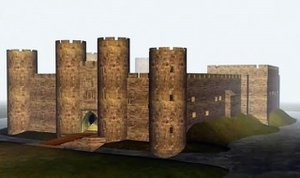
Episode 1 - Gold in the Moat - Codnor Castle, Derbyshire
Release Date: 2008-01-06The crumbling ruins of Codnor Castle are a sad remnant of the imposing home of the De Grey family - knights who saw action in almost every important medieval battle including the crusades and Agincourt. Today Codnor Castle lies in ruins and there's almost nothing known of how it looked in its prime. As the remains above ground get an overdue renovation, the Time Team risk the dangers of hidden mine shafts in the Derbyshire coalfields to dig into the heart of a building that once dominated the landscape to trace the castle's history. It lives up to the team's hopes as they strike gold with a 600-year-old gold noble coin as well as uncovering a huge round tower and, for the first time in the history of the programme, a drawbridge.
-
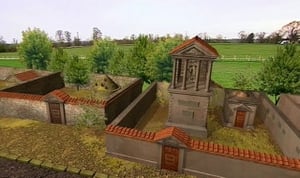
Episode 2 - Street of the Dead - Binchester, County Durham
Release Date: 2008-01-13Tony and the team tackle a huge Roman fort in County Durham. The stronghold was part of the defence of Dere Street, the main Roman road from York to Hadrian's Wall. The fort has fine mosaics and preserved rooms, but the Team have just three days to find out everything they can about the 'vicus', that's the civilian settlement around the fort, vital for the smooth running of the military machine and providing for the pleasures of the men garrisoned there. However, they soon discover something even more exciting during the dig - a series of military mausoleums, the first discovery of its kind for over 150 years. They also discover the remains of food eaten by the descendants of the dead during ritual meals.
-
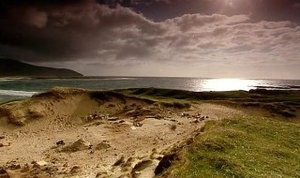
Episode 3 - Bodies in the Dunes - Barra, Western Isles
Release Date: 2008-01-20The Team travel to the windswept island of Barra, 50 miles off the west coast of Scotland, for a unique rescue dig. This Hebridean outpost is famous for its strip of unusually fertile sand dunes all round the coast, land that has been home to settlers for the last 4,000 years. When a storm ripped apart one of the dunes, it revealed Bronze Age graves and the remains of ancient houses. The team must also work in the face of the fierce Barra winds to preserve a collection of Iron Age ornaments before they become lost forever, including the remains of a cooking pot, and tools crafted from animal bones and whale rib.
-
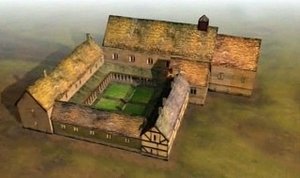
Episode 4 - The Naughty Nuns of Northampton - Towcester, Northamptonshire
Release Date: 2008-01-27A Northampton family, the Colecloughs live on the site of a 900-year old nunnery with a rather fruity past, which was at various times accused of witchcraft, begging and debauchery. The burial of a much loved family pet provides the curious starting point for an investigation. When eight-year-old Amy Coleclough's cat "Paintpot" died and her father dug a grave, he uncovered a large old wall. So Tony and the team dig up their garden, including a mysterious sarcophagi hidden there.
-
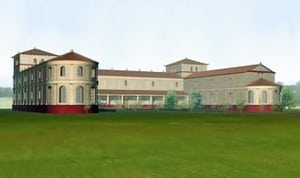
Episode 5 - Mysteries of the Mosaic - Coberley, Gloucestershire
Release Date: 2008-02-03Tony Robinson and his team unearth the secrets of a Cotswolds field. Hundreds of Roman coins and bits of masonry have been found on this land but it's the chance discovery of a piece of mosaic floor that has really got the archaeologists excited. The great and the good of Roman Britain built their posh houses in the Cotswolds, a sort of ancient stockbroker belt.
-
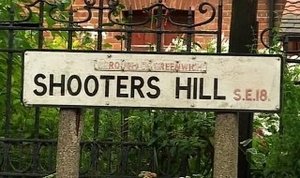
Episode 6 - Blitzkreig on Shooter’s Hill - South London
Release Date: 2008-02-10The Team delve into the very recent past to uncover the hidden archaeology of the biggest British battle that never was: the defence of Britain against a Nazi invasion in 1940. Along the busy main roads and in the quiet back gardens of a London suburb they uncover evidence of anti-tank weapons, secret bunkers and massive flame throwers.
-
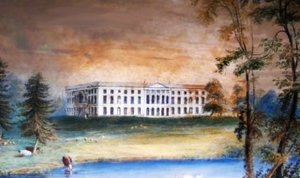
Episode 7 - Keeping Up with the Georgians - Hunstrete, Somerset
Release Date: 2008-02-17The team descend on a field just outside Bath to investigate the remains of what could have been one of the country's grandest Georgian houses. An impressive set of stone arches is all that remains of the house built 200 years ago by local MP Sir Francis Popham, but a couple of paintings show the building in its prime.
-
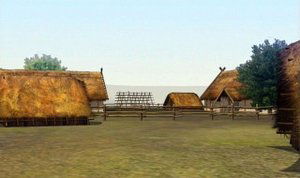
Episode 8 - Saxons on the Edge - Stonton Wyville, Leicestershire
Release Date: 2008-02-24An unassuming field in Leicestershire provides the team with a prize that has eluded them for 15 years. In a first for the programme, Tony Robinson and the team finally uncover the rarest of archaeological finds: an Anglo Saxon settlement and, in an attempt to discover the true origin of Britain's most famous Wessex Man, Phil Harding undergoes a DNA test to establish where his ancestors came from.
-
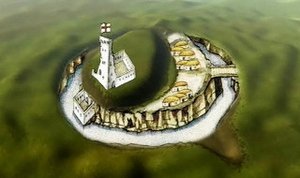
Episode 9 - Fort of the Earls - Dungannon, Northern Ireland
Release Date: 2008-03-02The team visit Northern Ireland to locate one of the most important sites in Anglo-Irish history. A hilltop castle above the city of Dungannon, stronghold of the powerful O' Neill clan, was seized by English forces in 1602, setting off events that would cause unrest in the two countries for centuries to come, the same hill was a top secret British Army base for the last 50 years.
-

Episode 10 - From Constantinople To Cornwall - Padstow, North Cornwall
Release Date: 2008-03-09Cornwall is probably not the first place that springs to mind when thinking about the Roman and Byzantine Empires but in a field overlooking a cove, just a mile down river from the famous Cornish village of Padstow, locals have picked up a wealth of 1,500-year-old pottery and metalwork from as far away as North Africa and Turkey. Geophysics results suggest an Iron Age village may have once been located on the site, but archaeologists think the cove may have also been a port for Mediterranean traders. The team dig for evidence which will support the theory, and after three days of work and initial difficulties, they believe they know how the site looked in its prime.
-

Episode 11 - Five Thousand Tons of Stone - Hamsterley, County Durham
Release Date: 2008-03-16The Time Team travel to County Durham to investigate the origins of a mysterious large stone structure which has had locals baffled for centuries. The stone structure is known locally as The Castles, its five-metre thick walls enclose a space the size of a football pitch.With guesses ranging from an Iron Age farm to a Roman prison, Tony Robinson and the team attempt to come up with a definitive answer.
-

Episode 12 - The Romans Recycle - Wickenby, Lincolnshire
Release Date: 2008-03-23Tony Robinson and his intrepid team of archaeologists head off the beaten track in Lincolnshire to discover why a metal detector enthusiast has discovered hundreds of Roman and Iron Age artefacts in a muddy field. Add to that the mysterious Roman columns strewn around the surrounding village and the team have a challenging three days to come up with some answers. As the dig progresses, the evidence mounts to suggest that the local Roman population were conscious of the need to recycle.
-

Episode 13 - Hunting King Harold - Portskewett, South Wales
Release Date: 2008-03-30For the final episode of the 2008 series the team head to the village of Portskewett in South Wales to investigate a field which is intriguingly named Harold's Field. Local legend has it that King Harold built a hunting lodge there the year before he lost the Battle of Hastings. The field is a mass of big earthworks and historical documents do record Harold building a lodge somewhere round the village of Portskewett. Within minutes of digging, the team discover that the site was not confined to just Harold and the Saxon period, having been used since late Roman times until well into the Middle Ages.
